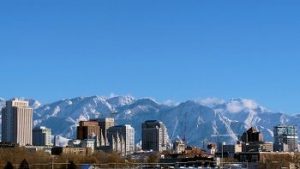Kairos Establishes New Office in Irvine, California: Why Make the Move?
By Jonathan Needell, President & Chief Investment Officer July 27, 2023 Kairos recently made the move to a new...

October 27, 2020
Investors of all stripes are frequently admonished to go where the growth is. So where should real estate investors be looking in 2020 and into 2021? As the COVID-19 pandemic drags on, and as growth sags in major metropolitan areas and gateway cities, I believe the answer could not be more straightforward: look to strong secondary cities.
Why is growth sagging in gateway cities such as New York, Miami, and San Francisco? The pandemic-driven exodus from major metropolitan areas is only part of the equation. There are other important factors playing a role, such as prohibitively high costs of living, rises in crime, and in many cases serious impediments to increasing the housing supply (limited supply of available land, prohibitive development policies, high construction costs, stringent municipal building codes, NIMBYism, and the list goes on). Critics of high-density development may be tempted to claim that “cities are over” but the truth is more nuanced: cities are coming to you. Secondary cities are urbanizing. And finally, simple mathematics are against major cities: the bigger a city is, the harder it is to continue growing at a rate comparable to the national average.
 With these factors in mind, strong secondary cities are looking increasingly attractive to real estate investors. What defines a secondary city as strong? I’m glad you asked:
With these factors in mind, strong secondary cities are looking increasingly attractive to real estate investors. What defines a secondary city as strong? I’m glad you asked:
(1) Strong population growth. A strong secondary city is growing much faster than the rest of the country, ideally two-to-three times the national average. Austin, Texas and Salt Lake City, Utah are excellent examples of this dynamic. From 2000 to 2010, the Austin metro area saw its population jump by an astonishing 37.3%; it grew another 29.8% from 2010 to 2019. Salt Lake City is growing at a slower, but still impressive rate—since 2010 it has grown by 14.44%. For comparison, the national population has grown by about 6.3% over the same period.
(2) A highly educated population. More highly educated residents are a major win for secondary cities, as they can command higher salaries and spend more at local businesses—and, importantly for real estate investors, they can spend more on housing. Again, Austin, Texas is nearly a textbook example of a strong secondary city, with 8% of the metro area possessing a bachelor’s degree or more advanced degree. Over 37% higher than the rest of the country and Texas generally.
(3) Diverse private sector employment. When looking at a strong secondary city, we don’t want a one-company town, as this makes the area vulnerable should the company fall on hard times. Ideally, we’d like to see ten large employers at minimum, which might include a major healthcare system, large universities, and/or a state-level government (in the case of state capitals).
(4) Income growth. Although this is not a must, strong secondary cities should ideally also be showing some strong income growth as well. In this category as well, Austin serves as a prime example. From 2010 to 2017, the city enjoyed annual income growth ranging from 4% to 10%.
Austin and Salt Lake City are far from the only strong secondary cities in the United States that are primed for growth in the coming years. By paying close attention to the characteristics mentioned in this article, real estate investors could be rewarded by finding the next Austin or Salt Lake City before it takes off.
*The views and opinions expressed in this article are solely my own.
 Back to All
Back to All
By Jonathan Needell, President & Chief Investment Officer July 27, 2023 Kairos recently made the move to a new...
Authored by Jonathan Needell, President and Chief Investment Officer November 4, 2021 Fannie Mae and Freddie Mac (the “Enterprises”)...
We Made a Promise to Strive for Deep Impact A pandemic induced dovish approach by the world’s central banks...
Authored by Jonathan Needell, President and Chief Investment Officer March 28, 2022 Value-add can be an excellent investment strategy...
Authored by Jonathan Needell, President & Chief Investment Officer August 28, 2020 In the United States, the ongoing COVID-19...
Authored by Jonathan Needell, President and Chief Investment Officer November 7, 2022 Affordable housing, defined as housing that a...
By Heather Lewis, Chief Compliance Officer and Jeanna Mackin, Associate Director of Human Resources August 9, 2023 Over the...
Finding Growth in Unexpected Places Authored by Trevor Schuesler, CFA, Associate Investment Director March 16, 2021 John Burr Williams’...
18101 Von Karman, Suite 1100
Irvine, CA 92612
(949) 709-8888
(949) 800-8500
investorreporting@kimc.com
Copyright © 2024 Kairos Investment Management Company | Disclosures
Kairos Investment Management Company is an Equal Opportunity Employer and, as such, does not discriminate in employment on the basis of an applicant or employee’s race, ethnicity, ancestry, national origin, color, sex, pregnancy (or related medical conditions), childbirth, family status, gender, gender identity or gender expression, age, religion, marital status, sexual orientation, disability, medical condition, military or veteran status, reproductive health decision making, or any other protected classification or characteristic under applicable federal, state or local law. Kairos will not discriminate against an applicant or employee who has one or more protected classifications, is perceived or regarded as having one or more protected classifications, or is associated with someone who has one or more protected classifications.
Kairos Investment Management Company will also provide reasonable accommodations to applicants and employees who may need such accommodations in connection with employment with Kairos on the basis of their disability, religion, status as a victim of domestic violence or pregnancy. An applicant who needs an accommodation in order to pursue employment with Kairos should contact Human Resources at HR@KIMC.com to request such accommodations. Kairos will engage in a good faith interactive process with the applicant to explore accommodations that will be effective, reasonable and not create an undue hardship.
You can see how this popup was set up in our step-by-step guide: https://wppopupmaker.com/guides/auto-opening-announcement-popups/
You can see how this popup was set up in our step-by-step guide: https://wppopupmaker.com/guides/auto-opening-announcement-popups/